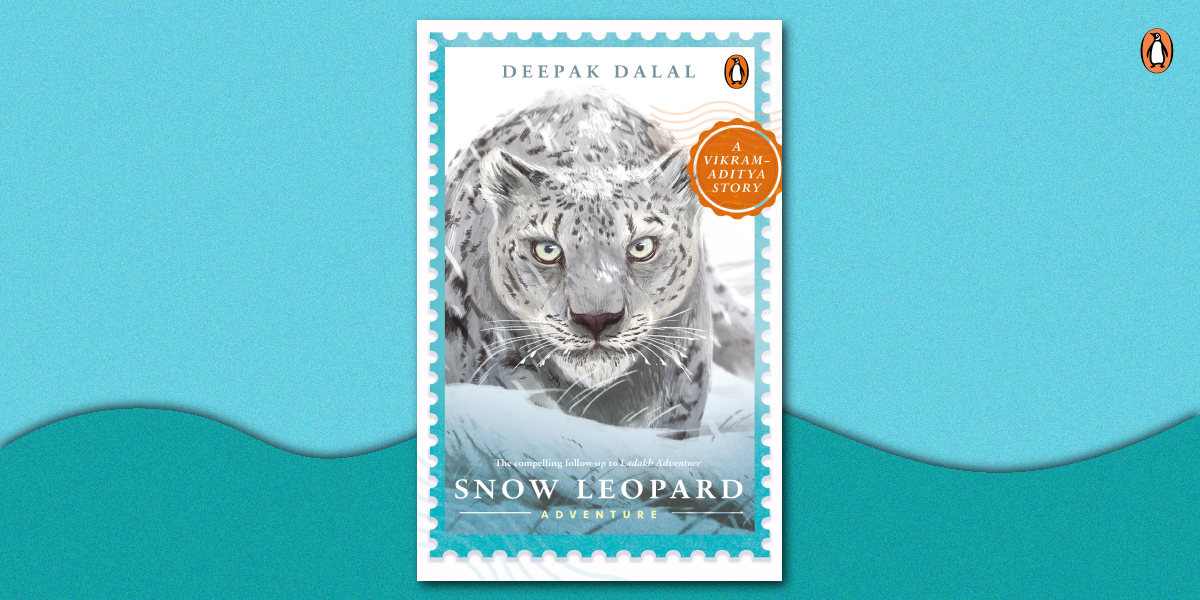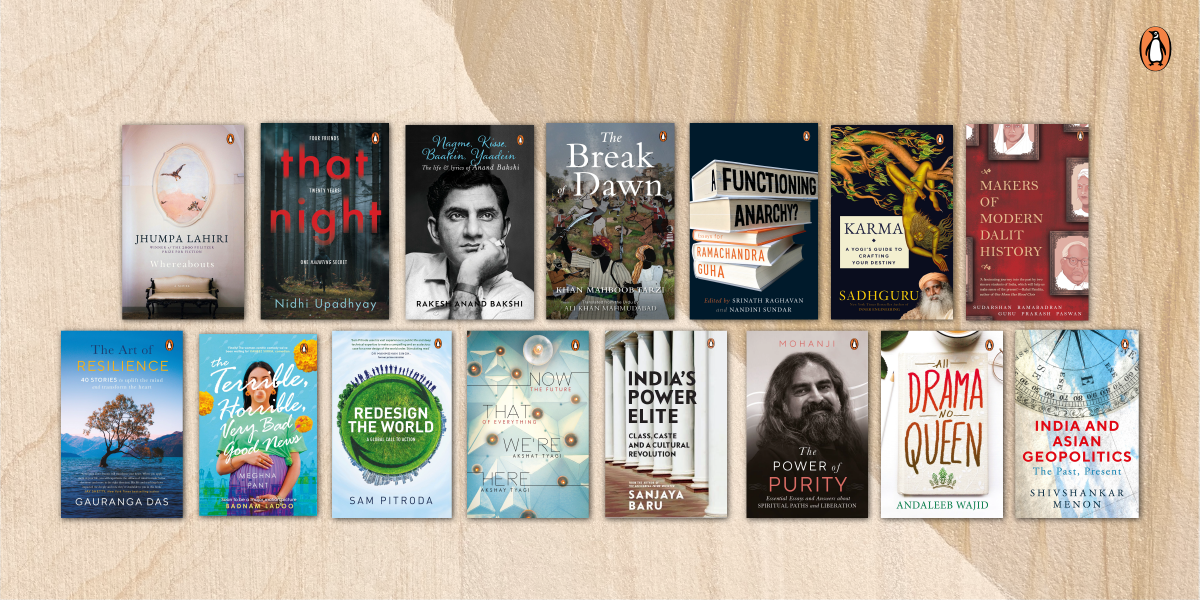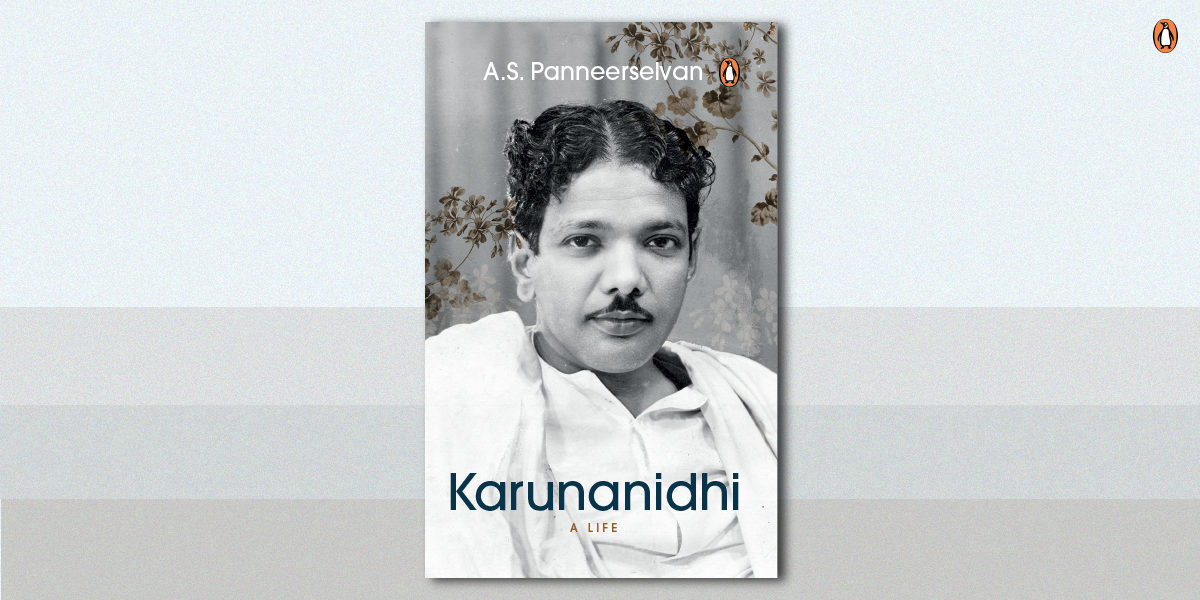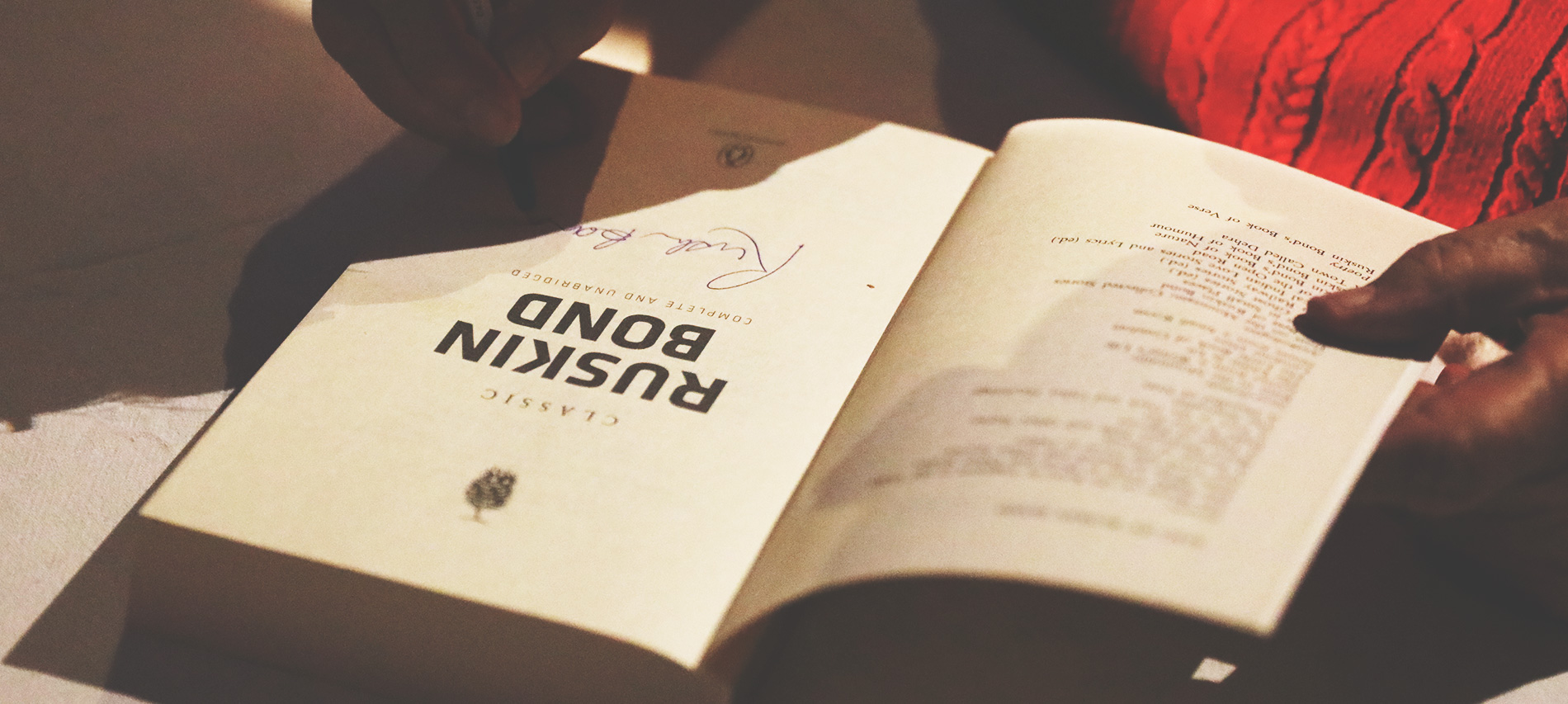While many use religion to justify why they are being unfair to a person’s gender and sexuality, Devdutt Pattanaik in his books The Pregnant King and Shikhandi And Other Queer Tales They Don’t Tell You shows how mythologies across the world appreciate what we deem as queer.
Here are 6 quotes on what it means to be a man, a woman, or a queer.
What it feels to be a woman

Repercussion of Patriarchy

The meaning of queer in different mythologies

Should the queer hide or be heard like the thunderous clap of the hijra?

The functions of the forms

Traces of feminism in Hindu mythology

Read Devdutt Pattanaik’s The Pregnant King and Shikhandi And Other Queer Tales They Don’t Tell You and make sense of queerness and the diversity in society.
Tag: Penguin Random House
10 tips to invest better the Coffee Can Investing way
Most people usually invest in the same four to five assets: real estate, gold, mutual funds, fixed deposits and stock markets. All they end up making is a measly 8 to 12 per cent per annum. Those who are exceptionally unfortunate get stuck in the middle of a crash and end up losing a lot of money. But what if there was another way?
In the book, Coffee Can Investing, Saurabh Mukherjea along with Pranab Uniyal and Rakshit Ranjan show us how to make low-risk investments that generate great returns.
Here are 10 tips from the book to help you invest better.
————–











A slip and a fall in search of the grey ghost of the Himalayas
In Deepak Dalal’s new book, The Snow Leopard Adventure, Vikram and Aditya are back in magnificent Ladakh. Having finally freed their young friend Tsering from the hands of dangerous men, they’ve set themselves up for an even greater challenge: to track down the grey ghost of the Himalayas, the snow leopard.
But things don’t always go according to the plan during their trek. Here is an excerpt from the book that highlights one of the more challenging events of the trek.

I didn’t see exactly what happened because I was looking down at the gravel-strewn track as I ran. I heard a scream, and when I looked up, I saw a pair of hands grabbing desperately at the edge of the outcrop. I wasn’t far behind Caroline and scarcely a few seconds must have elapsed between her falling and my flinging myself to the ground and locking my fingers around her wrists. I had barely grasped them when her scrabbling fingers slipped, and her entire weight was transferred on to me. I was dragged forward and my chest hit the rock at the edge of the cliff with a thud.
We were both stuck, Caroline dangling from my hands and I pressed against the cliff edge, pinned down by her weight. Caroline is three inches taller than my 5 feet 7 inches and also heavier than me (sixty-five kilos to my sixty, she told me later). I could feel myself being pulled towards the edge. Disaster appeared to be a certainty, but Tsering intervened, saving us by clinging to my thighs and adding his weight to mine.
Now, on reflection, I don’t think any of us would have died if we had gone over. The cliff we clung to was not a large one. The fall was only a few metres. But the area at the base of the cliff was not flat, it sloped downwards at an alarming angle. Our injuries could have been serious. We would have broken several bones, but we would have survived.
My breath came in rapid gulps and sweat must have flowed from my every pore. Yet, even though I was terrified, a part of my mind admired the vista that spread before me. I could see the river valley below and the mountain slopes opposite. I spotted flecks of colour in the distance—our camp mates. I wondered if they could see us.
I am ashamed to admit that I lost control of myself up there. My hands shook and my chest hurt terribly. My heart kicked and pummelled my chest, and my senses swam about me. I kept assuring myself that there was no reason to panic and that nobody would go over.
I had no idea then that I was speaking my thoughts aloud (Caroline and Tsering informed me later). I told myself that we only had to wait it out. Somebody would come . . . Tina and Kathy would return and untangle us.
Luckily, a heaven-sent determination infused Caroline as she dangled in the sparse Ladakh air. While I was rambling, she spotted fissures and cracks on the rock face she was suspended against. She willed her legs to grope beneath her and she found secure anchors in the stony crevices. Her fingers and palms gripped rock at the cliff edge. With me still holding on to her wrists, she pulled herself up a few inches.
I heard her breathing. She was gasping and panting far louder than I was. Soon her face was level with mine and our eyes met. Hers glittered with cold determination. There was a vacant expression in mine, she told me later. She was probably right, because she had to shout several times before I paid attention to what she was saying. She wanted me to release her wrists, which I did mechanically. Now sure of herself, Caroline dragged herself up and without further incident she flopped beside me. We lay inert on the rock, Tsering looking down on us.
After a long time we continued our walk to the crest. The rest of the morning was a blur. None of us were in any state to look for bharal or search for leopards. Kathy, Tina and Yuan turned up, exhausted, after an hour. They had found more sign of the leopard they were following but had not been able to locate it. We turned back for camp shortly thereafter. Caroline had extracted a promise from
Tsering and me not to speak about the morning’s drama to anybody. She smiled gratefully when it became clear that we were not going to say a word, and she turned distinctly friendly when we maintained our silence at camp too.
Aditya was aghast when he learnt that I had not pursued the leopard with the others. ‘How could you let such an opportunity go?’ he wanted to know. ‘You were so close to the leopard!’
Does Aditya eventually see the Snow Leopard? Grab your copy for Snow Leopard Adventure to find out!
Stay home, stay well and well-read
With April comes the spring! Unfortunately, with the current state of the world, it’s advised you spend more time indoors – for your own safety and that of others.
Make the most of this time spent at home, dear reader. Here is a list of new releases from Penguin Random House India coming your way. We’re sure you’ll find something to keep yourself busy, informed and entertained!
All Drama, No Queen

Farida’s parents passed away in an accident when she was twelve. And for years, she’s had to fend off Reshma Phuppu, a distant relative plotting to gain control of her parents’ house in Bangalore. When all the drama gets too much, she runs away to stay with her best friend, Priya. Farida deeply feels the absence of a family, and only has memories of her distant cousin, Irshad. She’s had a crush on him since she was a twelve-year-old, but they lost contact when her parents died. Nearly two decades later, Priya’s boyfriend, Ajay, serendipitously finds Irshad….
*
That Night

Natasha, Riya, Anjali and Katherine were best friends in college – each different from the other yet inseparable – until that night that began with a bottle of whisky and a game of Ouija but ended with the death of Sania, their unlikeable hostel mate. The friends vowed never to discuss that fateful night.
But now, someone has begun to mess with them, threatening to reveal the truth that only Sania knew. Is it a hacker playing on their guilt or has Sania’s ghost really returned to avenge her death?
That Night is a dark, twisted tale of friendship and betrayal that draws you in and confounds you at every turn.
*
The Terrible, Horrible, Very Bad Good News

Thirty-four-year-old Ladoo, a simple middle-class divorcée from Rishikesh, wants only one thing from life–a baby. She eats gondh halwa, drinks badam milk, and takes folic acid, to stop her ticking biological clock and become the world’s most fertile woman.
Along the way, Ladoo must figure out whether motherhood means marriage, whether being a single mother means loneliness, whether ‘my body, my rules’ applies to women, and whether doing something scandalous is outrageous or courageous.
*
The Power Of Purity

Power of Purity is a compilation of Mohanji’s spontaneous answers to questions posed during various satsangs (spiritual discourses) and interactions across the world. With razor-sharp clarity and wit, Mohanji provides the reader with deep, subtle, yet easy-to-understand insights into the varied aspects of human existence, uniting the seemingly contrasting goals of spiritual mastery and worldly success. Many can use this book as a guide to finding solutions to life’s myriad problems by randomly turning to one of its pages.
*
Nagme, Kisse, Baatein, Yaadein

An intimate peek into the life of the soldier-turned-lyricist Anand Bakshi, from his formative years in undivided Punjab to eventually moving to Bombay and landing his first film Bhala Aadmi in 1958. Along the way, he lost his mother, his place of birth, and his home and wealth, but his zeal to stand up and walk after every stumble and his desire to become a film artist never abated. He eventually rose to become one of the most revered and sought-after lyricists in Hindi cinema, writing nearly 3300 songs in about 630 films over the next five decades. Written by his son, this is an inspiring story of faith, dreams, success and, above all, human values.
*
Karma: A Yogi’s Guide to Crafting Your Destiny
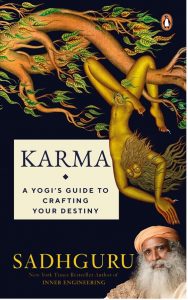
Through this book, not only does Sadhguru explain what Karma is and how we can use its concepts to enhance our lives, he also tells us about the Sutras, a step-by-step guide to navigating our way in this challenging world. In the process, we get a deeper, richer understanding of life and the power to craft our destinies.
*
Redesign the World
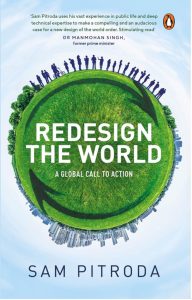
Redesigning The World is not about looking at it from the point of view of liberal or conservative; left or right; capitalism or socialism; public or private; democracy, dictatorship or monarchy; open or closed systems; rich or poor; urban or rural; east or west; white, brown, black or yellow. This proposed redesign of the world has the planet and its people at the centre; it is built on the foundations of sustainability, inclusion, equality, equity and justice so that everyone on earth can enjoy peace and prosperity. It is not an idealist or utopian vision, but one with humanity at its core.
*
A Functioning Anarchy

In a long and versatile career spanning thirty-five years, Ramachandra Guha has produced a vast body of work. In each of these, Guha has broken new ground: his pioneering environmental histories of India and his still relevant work (with Madhav Gadgil) on ecology and equity; his social histories of Indian cricket; his monumental history of the Indian republic; his biographies of Verrier Elwin and Gandhi; his anthologies of ecological, social and political thought in India; and his collection of biographical and political essays.
A Functioning Anarchy is a collection of essays by world-renowned historians, lawyers, scientists and journalists sparked by Guha’s work.
*
India’s Power Elite
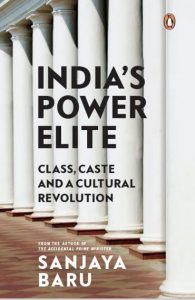
How the post-Covid world will be reshaped by class conflicts and caste prejudices remains to be seen. India’s Power Elite, though, is about pre-Covid India. It is an examination of the nature of power and elitism in the economic and political context of India. The morphology of the Indian power elite presents a complex structure, which is what Baru aims to deconstruct—whether it is the civil services, landed gentry or the remnants of the feudal elite. Aimed at the socially engaged reader, this book will also interest students and those who wield power.
*
India and Asian Geopolitics
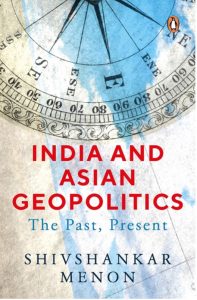
Documenting the changes in India’s foreign policy: from Independence to the Modi era, Shivshankar Menon addresses the many questions, which perplex India as the nation seeks to find its way in the increasingly complex world of Asian geopolitics. From its leading role in the ‘nonaligned’ movement during the Cold War to its current status as a perceived counterweight to China, India often has been an after-thought for global leaders-until they realize how much they needed it.
*
Whereabouts

Exuberance and dread, attachment and estrangement: in this novel, Jhumpa Lahiri stretches her themes to the limit. The woman at the center wavers between stasis and movement, between the need to belong and the refusal to form lasting ties. The city she calls home, an engaging backdrop to her days, acts as a confidant: the sidewalks around her house, parks, bridges, piazzas, streets, stores, coffee bars. We follow her to the pool she frequents and to the train station that sometimes leads her to her mother, mired in a desperate solitude after her father’s untimely death. In addition to colleagues at work, where she never quite feels at ease, she has girl friends, guy friends, and “him,” a shadow who both consoles and unsettles her.
*
The Art of Resilience
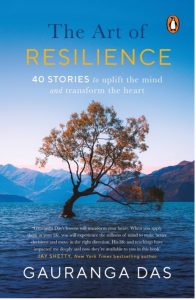
In this first volume of Yoga Stories, Gauranga Das takes you on an inner journey to explore your inner self, beyond the hills of expectation, through the valleys of disapprovals and beneath the layers of self-deception. Thus, bringing you closer to the home of your heart, enabling you to open the door and introduce yourself, to finally meet, the real you.
*
Makers of Modern Dalit History
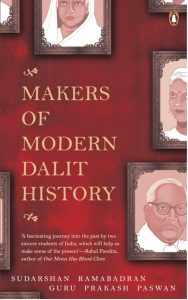
Featuring several inspiring accounts of individuals who tirelessly battled divisive forces all their lives, this book seeks to enhance present-day India’s imagination and shape its perception of the Dalit community. Makers of Modern Dalit History will be a significant addition to the Dalit discourse. This definitive volume on some of the foremost Dalit thinkers, both past and present, promises to initiate a much-needed conversation around Dalit identity, history and politics.
*
Now That We’re Here
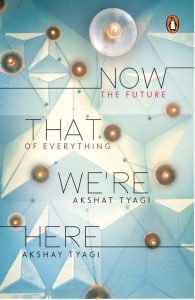
The hyperconnected world that once seemed futuristic is now here. And now that we’re here, it’s time for us to educate ourselves for sweeping and endless possibilities. One way to do that is to blur the lines between technology, democracy, design, economics and data, and reconfigure our approach to learning altogether. This book is a giant leap in that direction. By harnessing the wisdom of thought leaders and intellectuals throughout history, by blending business and humanity, industry and society, and by covering cross-disciplinary themes, authors Akshay Tyagi and Akshat Tyagi give us a groundbreaking, genre-defying and utterly mind-bending collection of essays that will help us prepare for the here and now.
*
The Absence of Adolescence
Writer – politician Muthuvel Karunanidhi is amongst the most important political leaders India has ever seen. In Karunanidhi: A Life, author A.S. Panneerselvan tells the story of the man who became a metaphor for modern Tamil Nadu, where language, empowerment, self-respect, art, literary forms and films coalesced to lend a unique vibrancy to politics.
Here is an excerpt from the chapter titled, The Absence of Adolescence.

Like many underprivileged children, karunanidhi’s life moved straight to adulthood from childhood, bypassing the phase of indulgent adolescence. The politicization that began with the anti-Hindi agitation and exposure to the literature of the Self- Respect Movement propelled karunanidhi into becoming an activist right from his days in the second form. The police excesses and the custodial deaths of two anti-Hindi agitators, Thalamuthu and natarajan, had a profound impact on the young karunanidhi.
The late 1930s witnessed varied crises for all the political players: the imperial government was getting ready for the Second World War; the great Depression and its fallout was taking its toll; Mahatma gandhi’s supremacy was challenged within the Congress by the election of Subhas Chandra Bose as the party president for the second time; and the Left was emerging as a distinct political force with its leaders gaining a hold over decision-making in both the Congress as well as other popular fronts. There was also a shift in Dravidian politics with the leadership moving from the wealthy section among the non-Brahmins to Periyar and Annadurai.
The twists and turns of the Left’s mobilization need elaboration in order to understand how, despite its revolutionary aura, karunanidhi remained with the Dravidian Movement’s social reform agenda. in his essay, in the January–March 1984 issue of The Marxist, E.M.S. namboodiripad points out that when the Congress Socialist Party was formed in 1934, the Communist Party of india initially branded it as Social Fascist. With the Comintern’s change of policy towards the politics of the Popular Front, the indian communists’ relationship to the inC witnessed a reversal. The communists joined the Congress Socialist Party (CSP), which worked as the left wing of the Congress. Once they had joined, the Communist Party of india (CPi) accepted the CSP demand for the Constituent Assembly, which it had denounced two years before.1
in July 1937, the first kerala unit of the CPi was founded at a clandestine meeting in Calicut. The five persons present at the meeting were E.M.S. namboodiripad, krishna Pillai, n.C. Sekhar, k. Damodaran and S.V. ghate. The first four were members of the CSP in kerala; ghate was a CPi Central Committee member, who had come from Madras. Contacts between the CSP in kerala and the CPi had begun in 1935, when P. Sundarayya (Central Committee member of CPi, based in Madras at the time) met with EMS and krishna Pillai. Sundarayya and ghate visited kerala several times and met with the CSP leaders there. The contacts were facilitated through the national meetings of the Congress, CSP and All india kisan Sabha.
in 1936–1937, the cooperation between socialists and communists reached its peak. At the second congress of the CSP, held in Meerut in January 1936, a thesis was adopted which declared that there was a need to build ‘a united indian Socialist Party based on Marxism-Leninism’. in kerala the communists won control over the CSP, and for a brief period controlled the Congress there.2
While the Congress in kerala had a distinct leftward tilt, in Tamil nadu it was virtually under the conservative leadership of stalwarts such as C. Rajagopalachari and S. Satyamurti.
Thiruvarur became a microcosm of the play of these multiple forces. Smitten by Periyar’s radicalism and Annadurai’s eloquence, karunanidhi began devouring the entire oeuvre of Dravidian literature. Periyar had already published the Tamil version of The Communist Manifesto in 1937; a number of serious political publications were being published from various parts of the state. Periyar’s Kudiarasu (The Republic) was the key vehicle for dissemination as well as articulating new ideas and planning political mobilization towards an egalitarian society.3
While Muthuvelar and Anjugam were rejoicing at their son’s tireless learning, little did they realize what he was reading about. Textbooks were last on karunanidhi’s reading list. The extensive literature in politics was revelatory for young karunanidhi. For the first time, he realized that he too had two priceless possessions—his oratory and his pen. His first public speech was a clear pointer. it was a school competition. And karunanidhi decided to make a mark. He looked at some of the redeeming features of the so-called villains within Hindu mythology. karunanidhi spoke at length about the friendship between karna and Duryodhana—a friendship that cut across both caste and class.
The speech was well-received, and the teachers developed a new respect for their wayward student. But, what they did not know was the effort that went behind this oratory. karunanidhi worked on the text of the speech for nearly a week; rehearsed the speech frequently before the mirror; changed the words, similes and metaphors to get the rhythm that would alter the art of public speaking in Tamil forever.
He also created his own publication—Maanavanesan (Friend of students). A handwritten fortnightly of eight pages in demy size that dealt with a range of issues—from questioning orthodoxy to exploring the poetics of early Tamil. He and his friends would make about fifty copies of the magazine and circulate it for a modest fee that managed to just cover the cost of the paper. Years later, when i met him at Murasoli along with Kungumam editor Paavai Chandran for a short interview for the Illustrated Weekly of India, karunanidhi said the handwritten journal was a great learning experience. ‘We could not afford to make any spelling mistakes or grammatical errors. A single mistake meant rewriting fifty copies. The sheer labour of correcting made me write a very clean first draft, without any corrections or overwriting,’ he recalled. He also took pains to mail a copy of the magazine to the leaders of the Self-Respect Movement.
But not all of karunanidhi’s icons were happy with the handwritten magazine. Bharathidasan, the well-known poet and a life-long supporter of the Dravidian Movement and karunanidhi, called it a waste of time and effort. He told karunanidhi: ‘The madness of expecting changes from handwritten publications can only be compared to the madness in thinking that development will happen due to spinning charkhas.’
Muthuvel Karunanidhi was ardent as a social reformer and unrelenting as an opposition leader. To read more about him, his life and his work, get your copy of Karunanidhi: A Life.
Angie Thomas’ books are important lessons on race, friendship and grief
Angie Thomas’ new book Concrete Rose returns to the site of her previous work, The Hate u Give, where the narrative events are catalysed by the police shooting of an unarmed black teenager. We’re returning to Thomas’ books, which are inspiring and necessary, delving into conversations around race, friendship, activism, and giving us characters that are unforgettable. Here is an excerpt from The Hate u Give:
A commotion stirs in the middle of the dance floor.
Voices argue louder than the music. Cuss words fly left and right.

My first thought? Kenya walked up on Denasia like she promised. But the voices are deeper than theirs.
Pop! A shot rings out. I duck.
Pop! A second shot. The crowd stampedes toward the door, which leads to more cussing and fighting since it’s impossible for everybody to get out at once.
Khalil grabs my hand. “C’mon.”
There are way too many people and way too much curly hair for me to catch a glimpse of Kenya. “But Kenya—”
“Forget her, let’s go!”
He pulls me through the crowd, shoving people out our way and stepping on shoes. That alone could get us some bullets. I look for Kenya among the panicked faces, but still no sign of her. I don’t try to see who got shot or who did it. You can’t snitch if you don’t know anything.
Cars speed away outside, and people run into the night in any direction where shots aren’t firing off. Khalil leads me to a Chevy Impala parked under a dim streetlight. He pushes me in through the driver’s side, and I climb into the passenger seat. We screech off, leaving chaos in the rearview mirror.
“Always some shit,” he mumbles. “Can’t have a party without somebody getting shot.”
He sounds like my parents. That’s exactly why they don’t let me “go nowhere,” as Kenya puts it. At least not around Garden Heights.
–
© 2017 Angela Thomas, by permission of Walker Books Ltd.
~
Concrete Rose is a return to Garden Heights, seventeen years before the events depicted in The Hate U Give. It is a fierce and inspiring account of what it means to grow up as a black man in the United States. Here is an excerpt:
“That trifling heffa! And I don’t mean Iesha,” Ma says. “I mean her momma!”
Ma ain’t stopped fussing since we left the clinic.
At first I thought Iesha and Ms. Robinson stepped outside. Nah, they left. One of the nurses said she pointed out they were leaving the car seat. Ms. Robinson told her, “We don’t need it anymore,” and shoved Iesha out the door.
We went straight to their house. I banged on the doors, looked through the windows. Nobody answered. We had no choice but to bring li’l man home with us.
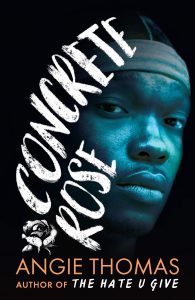
I climb our porch steps, carrying him in his car seat. He so caught up in the toys dangling from the handle that he don’t know his momma left him like he nothing.
Ma shove the front door open. “I had a funny feeling when I saw all them clothes in that diaper bag. They shipped him off without a word!”
I set the car seat on the coffee table. What the hell just hap- pened? For real, man. I suddenly got a whole human being in my care when I never even took care of a dog.
“What we do now, Ma?”
“We obviously have to keep him until we find out what Iesha and her momma are up to. This might be for the weekend, but as trifling as they are…” She close her eyes and hold her forehead. “Lord, I hope this girl hasn’t abandoned this baby.”
My heart drop to my kicks. “Abandoned him? What I’m supposed to–”
“You’re gonna do whatever you have to do, Maverick,” she says. “That’s what being a parent means. Your child is now your responsibility. You’ll be changing his diapers. You’ll be feeding him. You’ll be dealing with him in the middle of the night. You—”
Had my whole life turned upside down, and she don’t care.
That’s Ma for you. Granny say she came in the world ready for whatever. When things fall apart, she quick to grab the pieces and make something new outta them.
“Are you listening to me?” she asks.
I scratch my cornrows. “I hear you.”
“I said are you listening? There’s a difference.”
“I’m listening, Ma.”
“Good. They left enough diapers and formula to last the
weekend. I’ll call your aunt ’Nita, see if they have Andre- anna’s old crib. We can set it up in your room.”
“My room? He gon’ keep me awake!”
She set her hand on her hip. “Who else he’s supposed to keep awake?”
“Man,” I groan.
“Don’t ‘man’ me! You’re a father now. It’s not about you anymore.” Ma pick up the baby bag. “I’ll fix him a bottle. Can you keep an eye on him, or is that a problem?”
“I’ll watch him,” I mumble.
“Thank you.” She go to the kitchen. “‘He gon’ keep me awake.’ The nerve!”
I plop down on the couch. Li’l Man stare at me from the car seat. That’s what I’m gon’ call him for now, Li’l Man. King Jr. don’t feel right when he my son.
My son. Wild to think that one li’l condom breaking turned me into somebody’s father. I sigh. “Guess it’s you and me now, huh?”
I hold my hand toward him, and he grip my finger. He small to be so strong. “Gah-lee,” I laugh. “You gon’ break my finger.”
He try to put it in his mouth, but I don’t let him. My fingernails dirty as hell. That only make him whine.
“Ay, ay, chill.” I unstrap him and lift him out. He way heavier than he look. I try to rest him in my arms and sup- port his neck like Ma told me to. He whimper and squirm till suddenly he wailing. “Ma!”
She come back with the bottle. “What, Maverick?”
“I can’t hold him right.”
She adjust him in my arms. “You relax, and he’ll relax.
Now here, give him the bottle.” She hand it to me, and I put it in his mouth. “Lower it a little bit, Maverick. You don’t wanna feed him fast. There you go. When he’s halfway through it, burp him. Burp him again when he’s done.”
“How?”
“Hold him against your shoulder and pat his back.”
Hold him right, lower the bottle, burp him. “Ma, I can’t—” “Yes, you can. In fact, you’re doing it now.”
~
Two beautiful, urgent reads that will stay with you.
We are all complicit in the climate crisis
It is deeply unfortunate that it took a pandemic and its damage to make us realise what we should have known from the very beginning – we owe our environment sustainable and responsible use. No man is an island, and certainly not when it comes to the natural world. Deanne Panday, in her book Balance, takes a deep dive into the climate crisis and the depth of human complicity in the destruction of our natural world.
The climate of the world has seen a drastic global change merely over the past few decades. We have arrived at a point in the Anthropocene where the damaging impact of human footprint has become irreversible. The increased emission of carbon dioxide has increased health risks and long-term respiratory damage. One living in a metropolitan city is no stranger to this – checking the AQI levels of our cities and towns fills us with dread, and yet this dread remains insufficient in motivating us to radically change our lifestyle.
The increase of greenhouse gases such as carbon dioxide and methane has resulted in heat waves, where days are getting hotter. Extreme heat can lead to more droughts and hot, dry conditions can, in turn, spark off wildfires. We have recently seen devastating fires in Australia and California. Heat waves lead to drought, which would translate into food scarcity and eventually famines especially in countries reliant largely on agriculture.

The ozone layer has not been an exception in the damage done to the natural environment of the planet. While in the stratosphere it absorbs ultraviolet rays from the sun, the story changes closer to ground. Ground-level ozone is emitted from industrial facilities and electric utilities, motor-vehicle exhaust, petrol vapours and chemical solvents. Breathing ozone can result in chest pain, throat irritation, coughing and congestion. More ozone is formed in summer because there is more ultraviolent radiation from the sun then. It has been estimated that ozone mortality will be more pronounced in India and China, eastern United States, most of Europe and southern Africa.
Covid-19 is not the only that will plague our lives. Other climate sensitive diseases like cholera, malaria, the West Nile virus etc are expected to magnify. According to the Intergovernmental Panel on Climate Change, the rise in temperatures, along with an increase in population, could put many more people at risk of being infected by it. The reproductive, survival and biting rates of the Aedes aegypti mosquito species, which carries dengue, are strongly influenced by temperature, precipitation and humidity. Mosquitoes are cold-blooded creatures and seek out warmer environments to regulate their body temperatures.
Greenhouse gases also have an impact on the spread of infectious diseases, since they affect rainfall and temperatures. Higher greenhouse gas emissions also impact nutrients in food – A higher carbon dioxide concentration reduces nutrients such as proteins, vitamin A and folate, which are already in short supply for lakhs of people around the world.
Fertilizers are also responsible for several health disorders. Algal and cyanobacterial blooms produce toxins that are harmful to wildlife and humans. Warmer ocean temperatures and precipitation promote their growth, and their main ingredient is nitrogen. The heavy use of nitro-based fertilizers to grow our food causes a range of illnesses in human beings, such as headaches, vomiting, diarrhoea, numbness and tingling.
The planet we inhabit now is vastly different from the one that existed even thirty years ago. The deterioration has been incredibly rapid. At this point, where restoration might be an option anymore, it is high time we at least begin the process of mitigation instead of myopically pursuing personal comforts.
Meet Judy Moody, The Queen of Moods!
Judy Moody is a third grader with plenty of attitude and a mood for every occasion. This delightful series, created by Megan McDonald, is loaded with laughs and moments of wisdom as readers follow Judy through her hilarious adventures.
The fabulous Judy Moody will delight any child who’s known a bad mood or a bad day—and managed to laugh and learn along the way!
————————————








5 Times Ruskin Bond Made Us Fall in Love with Poems – All Over Again!
Ruskin Bond’s literary career started with his much loved first novel, The Room on the Roof, written when he was only seventeen. It went on to win the John Llewellyn Rhys Memorial Prize in 1957. Since then there has been no looking back! He has written several novellas, over 500 short stories and articles, essays, poems and children’s books. He was also awarded the Sahitya Akademi Award in 1993 and the Padma Shri in 1999. He now lives in Landour, Mussoorie, with his adopted family.
On the birthday of this absolutely adored author of Indian literature (by both adults and children alike), we shall take a walk through his beautiful poetry that could only be woven by this genius.





————————————————

Talent Wins: The New Playbook for Putting People First – An Excerpt
Turning conventional views on their heads, talent and leadership experts Ram Charan, Dominic Barton and Dennis Carey provide leaders with a new and different playbook for acquiring, managing and deploying talent–for today’s agile, digital, analytical, technologically driven strategic environment and for creating the HR function that business needs. Filled with examples of forward-thinking companies that have adopted radical new approaches to talent (such as ADP, Amgen, BlackRock, Blackstone, Haier, ING, Marsh, Tata Communications, Telenor and Volvo), as well as the juggernauts and the start-ups of Silicon Valley, this book shows leaders how to bring the rigor that they apply to financial capital to their human capital–elevating HR to the same level as finance in their organizations.
Here’s an excerpt from the book.
——————————————
The top of the company also must align behind something else: the story you’re going to tell investors. If you’re leading a talent-driven organization but talking strategy-first to Wall Street, there’s a disconnect between your company’s public and private personae. That’s not good for investors, your company, or your workforce.
Telling investors about talent seems like a risky tactical change. Why would a company in, say, the semiconductor industry want to position itself in a way that seems more suited to a movie studio announcing its latest slate of star-driven features?
There are several answers to this question. For starters, shifting to a story built around talent is a sign of the times. Some companies already include slides about their key talent in their quarterly presentations. Financial analysts know the impact people like Jony Ive, Astro Teller, Sheryl Sandberg, and Andy Rubin can have on a company’s valuation. The phenomenon is hardly limited to tech: the performance or career peregrinations of Wall Street stars, fashion leaders, and even manufacturing pros can affect share prices as well.
But your company’s talent narrative isn’t just a story of stars. In fact, in times of great turbulence it can be a sign of stability. GE has made its deep talent-development efforts part of its narrative for years. GE stock has had its challenges, of course. But the company’s education efforts at its Crotonville, New York, facility and its history of always having great talent at the ready give investors confidence in GE’s management pipeline. Google’s track record of giving great leeway to its talented employees is equally well known. At one point, employees were even encouraged to spend 20 percent of their time working on their own pet projects. Investors have applauded CEO Larry Page’s effort to rein in some of the company’s more outlandish experiments, but they wouldn’t want to see the company reduce its commitment to innovation. Analysts have come to expect the unexpected from companies like Google, Amazon, and Apple, and are apt to forgive the occasional failure, because the companies’ talent-first models have produced one unexpected innovation after another. At these companies, there’s a well established narrative history of the power of talent.










